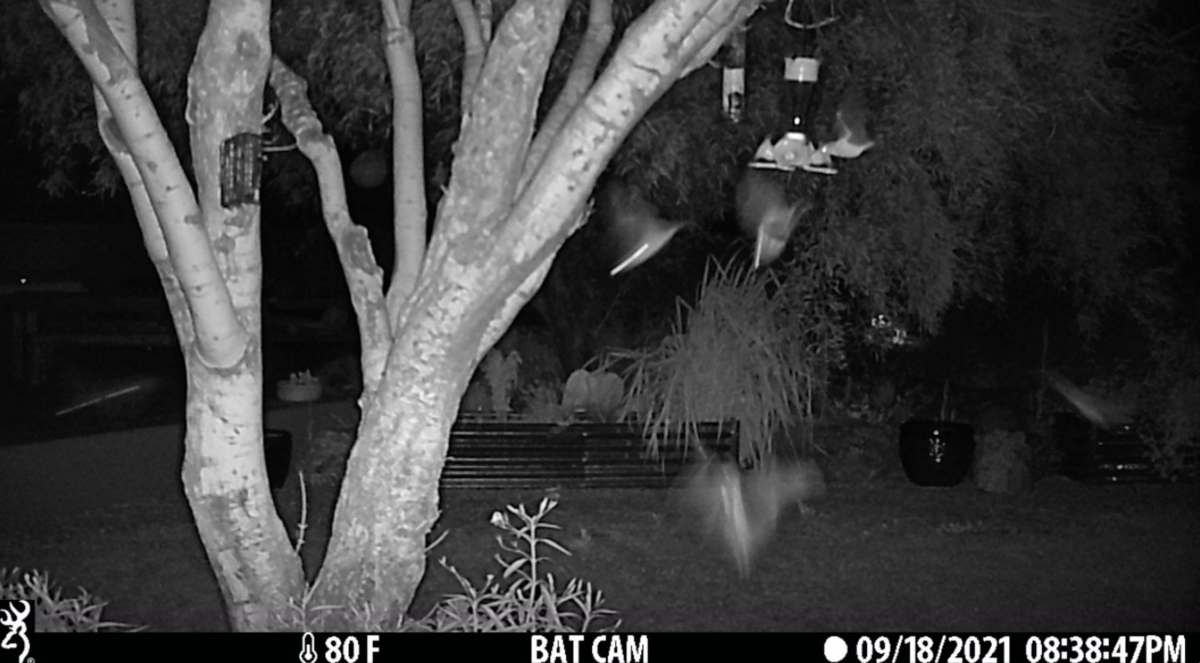At some point over the summer, did you wake up to discover that your hummingbird feeder had been drained and emptied seemingly overnight? If so, how exciting! You may have been visited by migratory bats.

Photo credit: Four bats feeding from a hummingbird feeder after dusk. Taken by Emily Burns.
For many years, community scientists have helped the Arizona Game and Fish Department (AZGFD) monitor the recovery of Lesser long-nosed bats around Tucson through their ongoing Backyard Bats: Bat and Hummingbird Feeder Study. By keeping watch over your hummingbird feeders, you can help biologists better understand how these bats move as they travel north in the summer, following the bloom of succulents like saguaro and agave.
Read More: Creature Feature—Lesser Long-Nosed Bats
Lesser long-nosed bats roost in caves during the day and venture out after dusk in search of flower nectar—and in many urban areas, hummingbird feeder nectar.
Today, we are asking volunteers to place an extra wildlife camera near their feeder to record the timing of when these bats arrive at feeders, how many bats show up to feed together, and how quickly they empty hummingbird feeders.
To get involved in the Backyard Bats and Hummingbird Feeder Study:
1. Set up a high-resolution wildlife camera with a clear view of a hummingbird feeder and the airspace around it.
2. Fill the hummingbird feeder to the top with nectar at dusk and make sure your camera is set to record video (rather than take a picture) each night. The video should be triggered by movement.
3. When you review the footage on your camera over the following days and weeks, please note:
- The date, time, and location of the video.
- The type of recording device you’re using.
- The time of night you’re seeing your first bat visit.
- The time of night you’re seeing your last bat visit.
- The number of bats seen on camera at their peak activity.
Click here to download a sample bat activity data sheet.
Once you’ve collected your observations: When the season is over and you no longer observe bats at night, email a copy of your bat activity data sheet to Ted Fleming from the University of Arizona at [email protected].
You can also contact him with any questions you have about this data collection effort.
